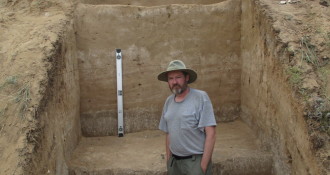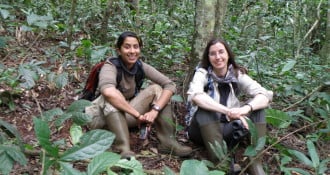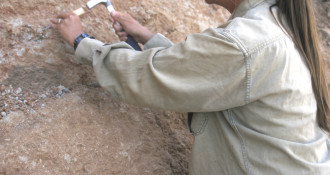Carolina Mallol has been awarded three Leakey Foundation research grants for her project entitled “Neandertal fire technology.” Currently she is beginning the field season for her third grant awarded in our spring 2015 cycle, and so we thought we would post the final report from her 2012 grant. This is an excerpt from the report followed by a link to the report itself.

Our ongoing research on Neandertal fire technology is part of a multidisciplinary project ongoing since 2010 with full support of the Leakey Foundation. The ultimate goal of our project is to generate a corpus of experimental and ethnoarchaeological data on different behavioral variables related to combustion activities that can be used as analytical tools for the study and interpretation of the Middle Palaeolithic record. As of today, we have obtained significant results, which have been presented in international conferences and published in widely read international peer-reviewed journals.
- To investigate taphonomic aspects of some of the experimental 2010 fires left in situ.
- To investigate relighting, an aspect of combustion whose identification is problematic (according to the results of our 2010 experiments).
- To investigate different aspects of combustion on stony substrates.
- To carry out an archaeological excavation season at Abric del Pastor, a Middle Palaeolithic site with evidence of anthropogenic fire on stony substrates, dating to more than 75,000 years ago.
- To carry out lipid analysis of sediment from a selection of our 2010 experimental fires.
We approached these goals with an interdisciplinary method previously applied in our first project (NFT-2010). The method is based on integration of macro and micro-scale analyses of the sedimentary context of experimental and archaeological combustion structures, as well of any material remains (lithics, bones and charcoal) associated with them. For the experimental fires, we also analyzed the temperature record. The microstratigraphic techniques implemented for the analysis of sediments included: 1) Micromorphology using transmitted light microscopy, 2) Mineralogy using Fourier Transform Infrared Spectroscopy (FTIR), 3) Phytolith analysis and 4) Lipid analysis using Gas Chromatography-Mass Spectrometry.
Integration of these techniques allowed us to describe anthropogenic combustion contexts in great detail and understand the interaction between different variables that play a role in the formation of the archaeological combustion features.
Click the image below to read the rest of the report.






